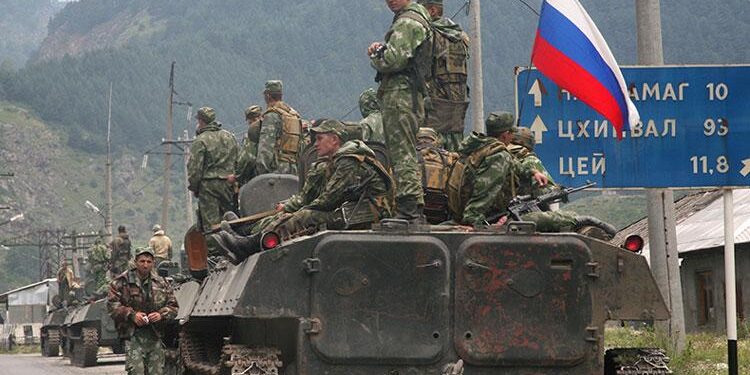As tensions between Russia and NATO continue to simmer amid ongoing geopolitical disputes, experts and analysts are increasingly examining the potential scenarios of a Russian military incursion into NATO territory. This article delves into the strategic calculations, possible flashpoints, and the broader implications such an invasion could have for global security. Drawing on military assessments and diplomatic insights, we explore how a conflict between Russia and the allied forces of NATO might unfold, and what it would mean for the balance of power in Europe and beyond.
Strategic Military Objectives and Initial Moves Explored
At the onset of a hypothetical Russian incursion into NATO territory, Moscow’s primary focus would likely revolve around securing key strategic corridors and incapacitating NATO’s rapid response capabilities. Key objectives might include capturing pivotal border crossings, disrupting command and control infrastructure, and neutralizing forward-deployed air defense systems. Special operations forces would be expected to spearhead these efforts, targeting communication hubs and logistical nodes to create operational disarray.
Initial military maneuvers could involve a combination of swift mechanized advances and coordinated cyber offensives designed to paralyze allied command networks. Experts predict Moscow may rely heavily on electronic warfare and intensive missile barrages to achieve air superiority in contested zones. The following outlines potential tactical priorities:
- Securing the Suwałki Gap to disrupt reinforcement routes between Poland and the Baltic states
- Seizing critical infrastructure such as bridges, railways, and ports to control supply chains
- Deploying anti-access/area denial (A2/AD) systems to limit NATO air and naval response
- Launching decoy operations to divert allied attention and resources
| Objective | Likely Target Area | Expected Impact |
|---|---|---|
| Command Disruption | Baltic States | Sever NATO communication, delay reinforcements |
| Logistics Control | Polish Border | Hinder supply, isolate frontline units |
| Air Defense Suppression | Eastern European theater | Facilitate air dominance |
| Cyber Attacks | Whole NATO Network | Paralyze coordinated response |
Potential NATO Responses and Alliance Cohesion Under Strain
NATO’s response to a direct Russian invasion would likely combine rapid military mobilization with calibrated diplomatic pressure. Member states would initially activate Article 5, signaling collective defense, but the complexity of political will across the alliance raises questions about unified action. Eastern European members closest to the conflict zone might push for immediate and forceful intervention, while some Western European nations could favor measured responses to avoid full-scale escalation. Options on the table include:
- Deployment of rapid reaction forces to reinforce frontline states
- Strategic missile defenses augmentation and airspace control
- Imposition of severe economic sanctions targeting the aggressor’s energy and banking sectors
- Increased intelligence sharing and cyber defense collaboration
However, cracks within the alliance could widen under sustained pressure. Diverging national interests, economic dependencies on Russia, and differing threat perceptions risk undermining NATO’s traditional unity. Experts warn that maintaining solidarity will depend heavily on strong leadership and transparent communication. The table below outlines potential points of tension versus reinforcing mechanisms that could either strain or cement NATO cohesion amid crisis:
| Potential Tensions | Reinforcing Mechanisms |
|---|---|
| Economic reliance on Russian energy | Joint energy diversification strategies |
| Varying threat perceptions (East vs West) | Regular high-level consultations and intelligence briefings |
| Disagreement over military escalation | Unified command structures and pre-agreed rules of engagement |
| Domestic political pressures in member states | Alliance-wide public diplomacy and information campaigns |
Critical Recommendations for Strengthening Eastern European Defenses
To effectively deter or counter any aggressive moves, NATO’s eastern flank requires an immediate boost in both manpower and technological assets. This includes the rapid deployment of advanced air defense systems capable of intercepting cruise missiles and drone swarms, which have become staples in modern hybrid warfare. Equally important is the enhancement of cyber defense units tasked with defending critical infrastructure against sophisticated Russian cyber incursions. NATO must also focus on interoperability drills, ensuring that forces from diverse member states can operate seamlessly under high-pressure scenarios and in complex terrain, such as urban centers or dense forests prevalent in Eastern Europe.
Key strategic priorities involve:
- Pre-positioning rapidly deployable armored brigades along vulnerable corridors
- Upgrading logistics networks for faster troop and equipment movement
- Expanding intelligence-sharing cooperation with regional partners
- Increasing investments in unmanned reconnaissance vehicles
| Defense Element | Current Status | Recommended Action |
|---|---|---|
| Air Defense | Limited coverage in Baltic states | Deploy S-400 or Patriot systems |
| Cybersecurity | Fragmented approach | Establish unified NATO cyber command |
| Mobile Armor Units | Insufficient numbers | Pre-position armored brigades |
| Reconnaissance Assets | Dependence on outdated UAVs | Integrate advanced electronic surveillance drones |
The Conclusion
As tensions continue to simmer on the global stage, the prospect of a Russian invasion of NATO remains a deeply complex and highly consequential scenario. While experts emphasize the unpredictability of such a conflict, the strategic calculations, military capabilities, and diplomatic responses outlined here provide critical insight into how events might unfold. Vigilance, robust international cooperation, and measured diplomacy will be essential in preventing such an escalation and preserving stability in the region. Newsweek will continue to monitor developments closely, bringing you timely analysis on this evolving story.
















